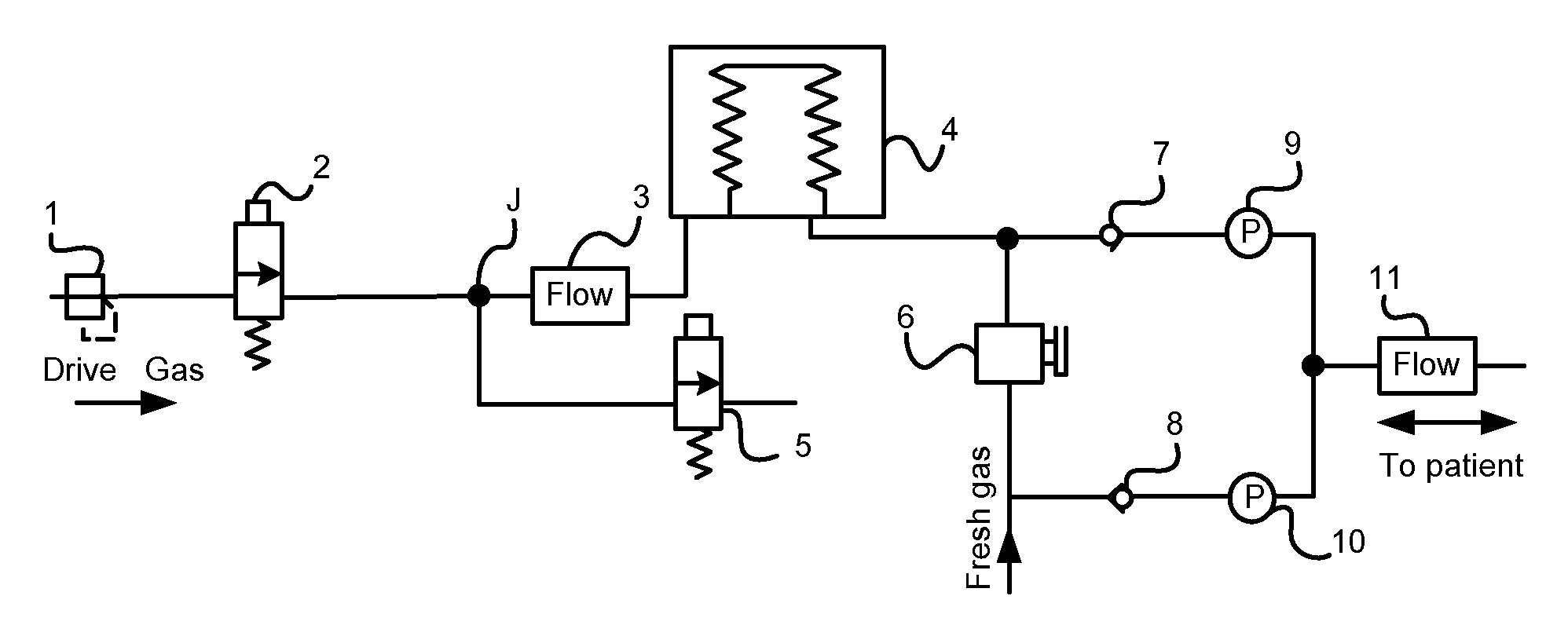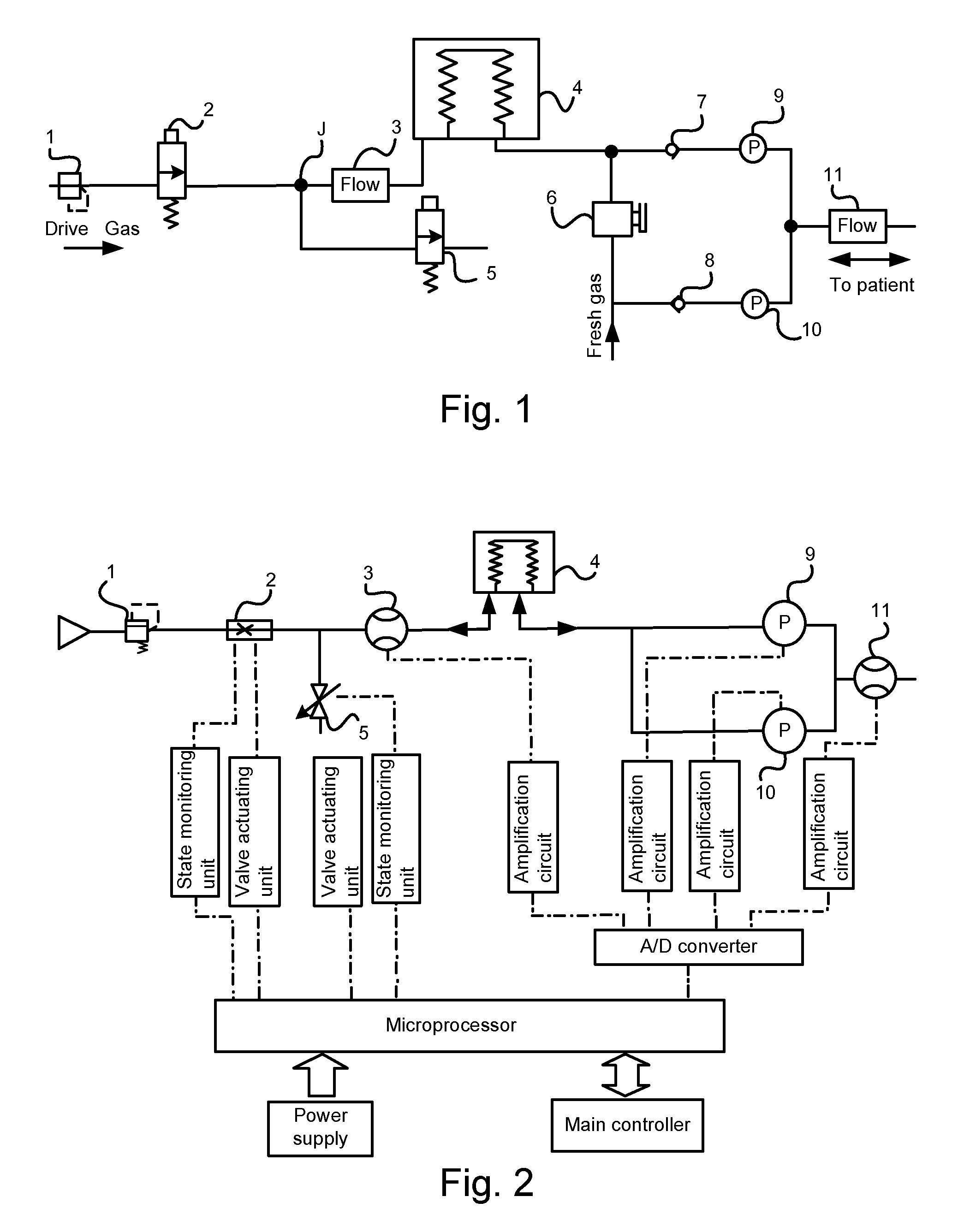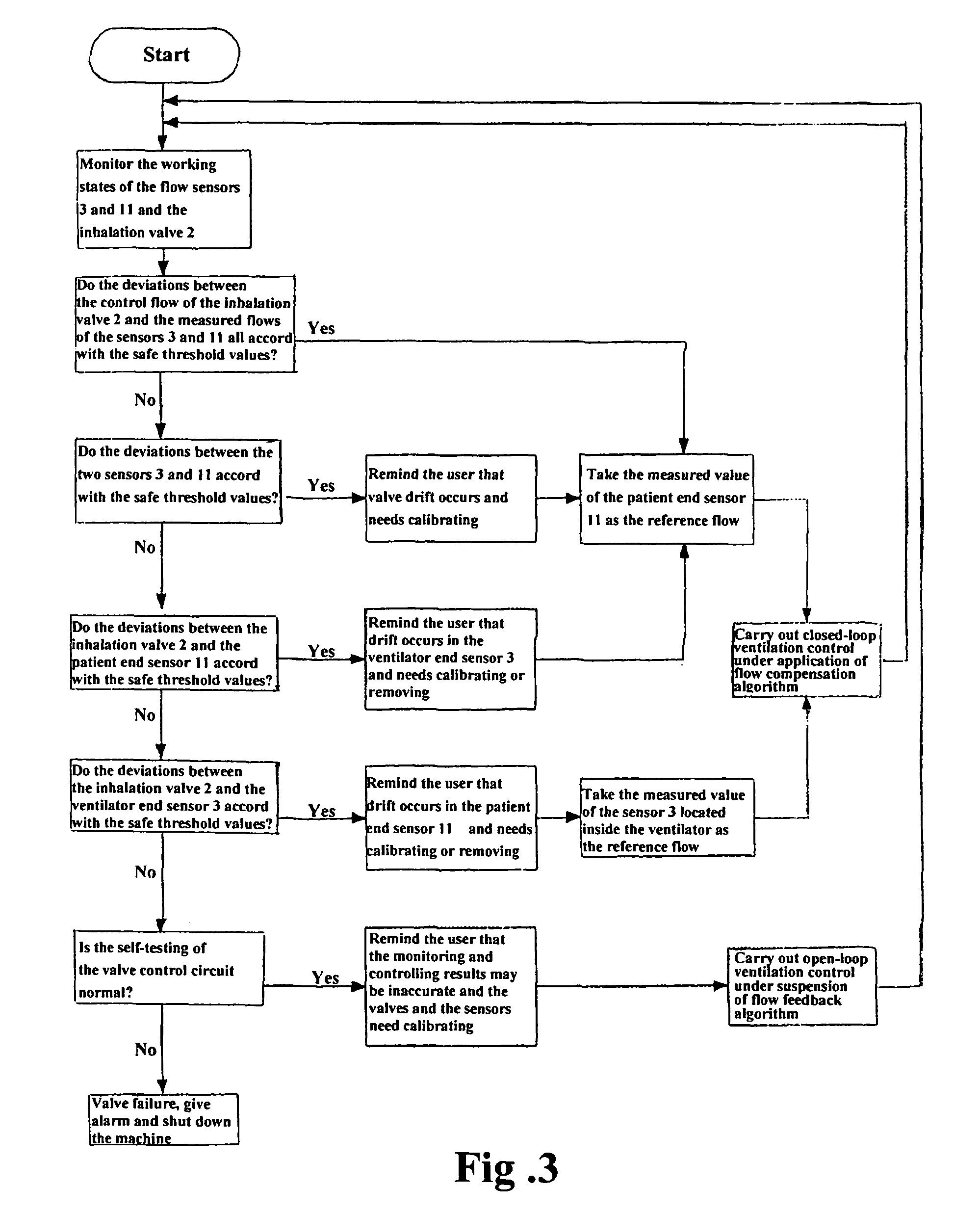Method and an apparatus for monitoring and controlling flows
a flow monitoring and flow control technology, applied in the field of medical equipment, can solve the problems of measurement results deviating from the true values, affecting the accuracy of mechanical ventilation control, so as to ensure the accuracy and safety of controlling mechanical ventilation and accurate flow monitoring and control
- Summary
- Abstract
- Description
- Claims
- Application Information
AI Technical Summary
Benefits of technology
Problems solved by technology
Method used
Image
Examples
Embodiment Construction
[0028]The present invention will be described hereunder in further details with reference to the preferred embodiments shown in the accompanying drawings.
[0029]As shown in FIG. 2, the apparatus for monitoring and controlling flows according to the present invention comprises a power supply, a microprocessor, an airway system, and several microprocessor-controlled valve state monitoring units, valve actuating units and data collecting and receiving units. The apparatus may further comprise microprocessor-controlled interface units for connecting a main controller (also known as a higher level controller). As shown in FIG. 1, the airway system comprises a bellows 4 and drive gas conduits at the ventilator end and breathing tubing at the patient end which are connected to the outer chamber and the gasbag of the bellows 4, respectively. The drive gas conduits connect a pressure-reducing valve 1, an inhalation valve 2 and an exhalation valve 5 which is used to vent the gas. The inhalatio...
PUM
 Login to View More
Login to View More Abstract
Description
Claims
Application Information
 Login to View More
Login to View More - R&D
- Intellectual Property
- Life Sciences
- Materials
- Tech Scout
- Unparalleled Data Quality
- Higher Quality Content
- 60% Fewer Hallucinations
Browse by: Latest US Patents, China's latest patents, Technical Efficacy Thesaurus, Application Domain, Technology Topic, Popular Technical Reports.
© 2025 PatSnap. All rights reserved.Legal|Privacy policy|Modern Slavery Act Transparency Statement|Sitemap|About US| Contact US: help@patsnap.com



